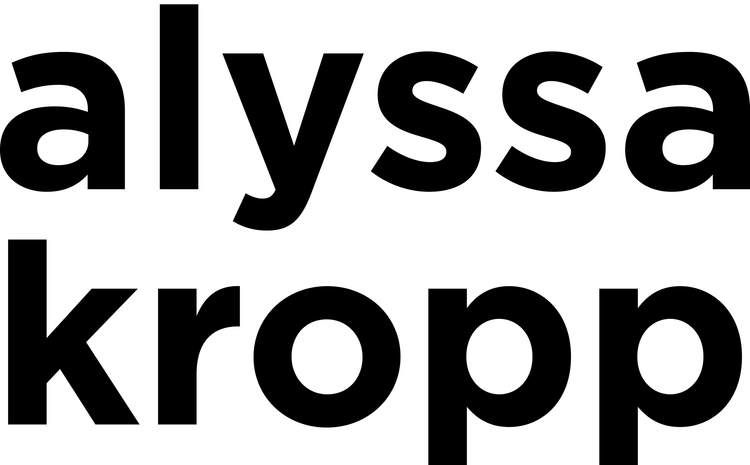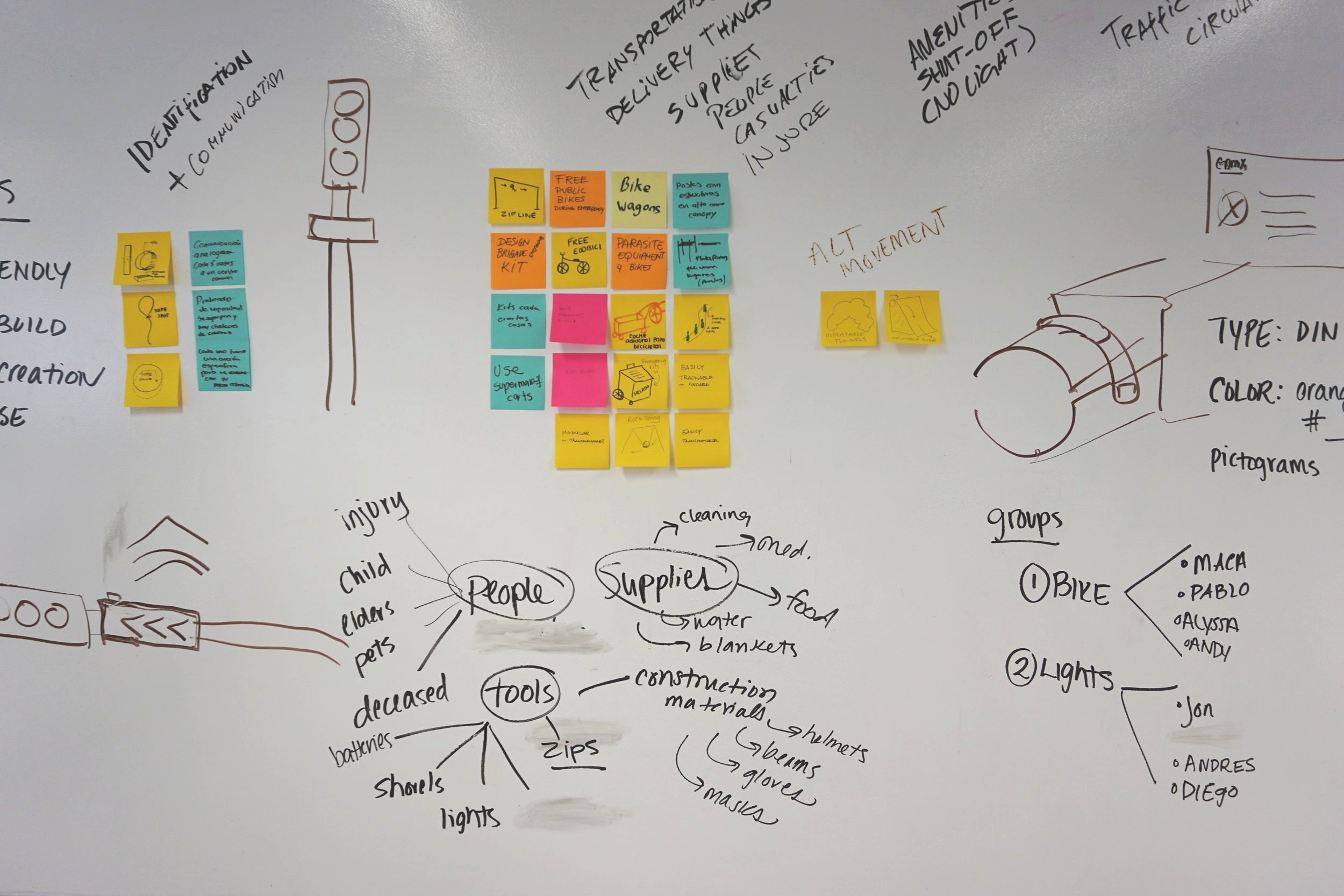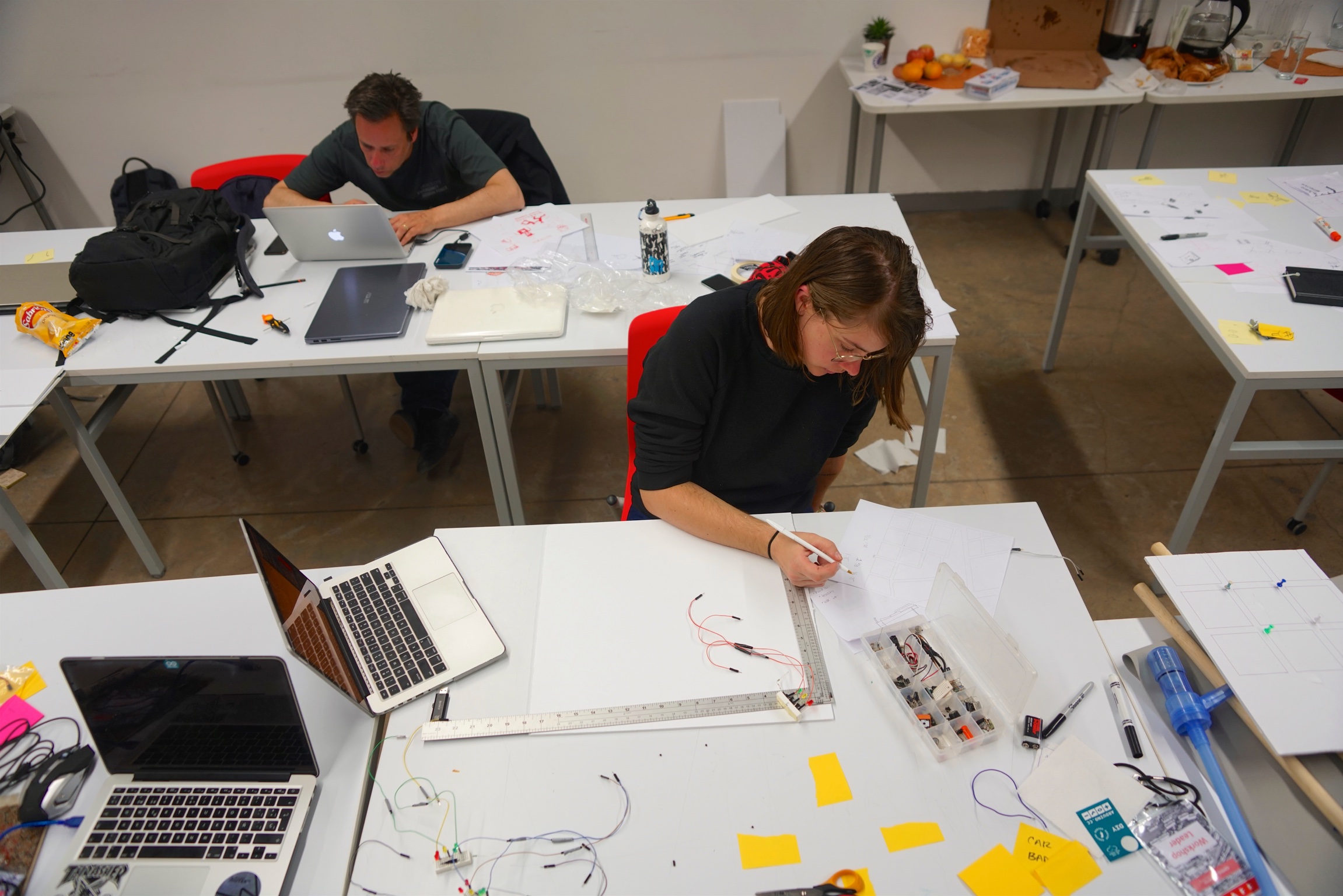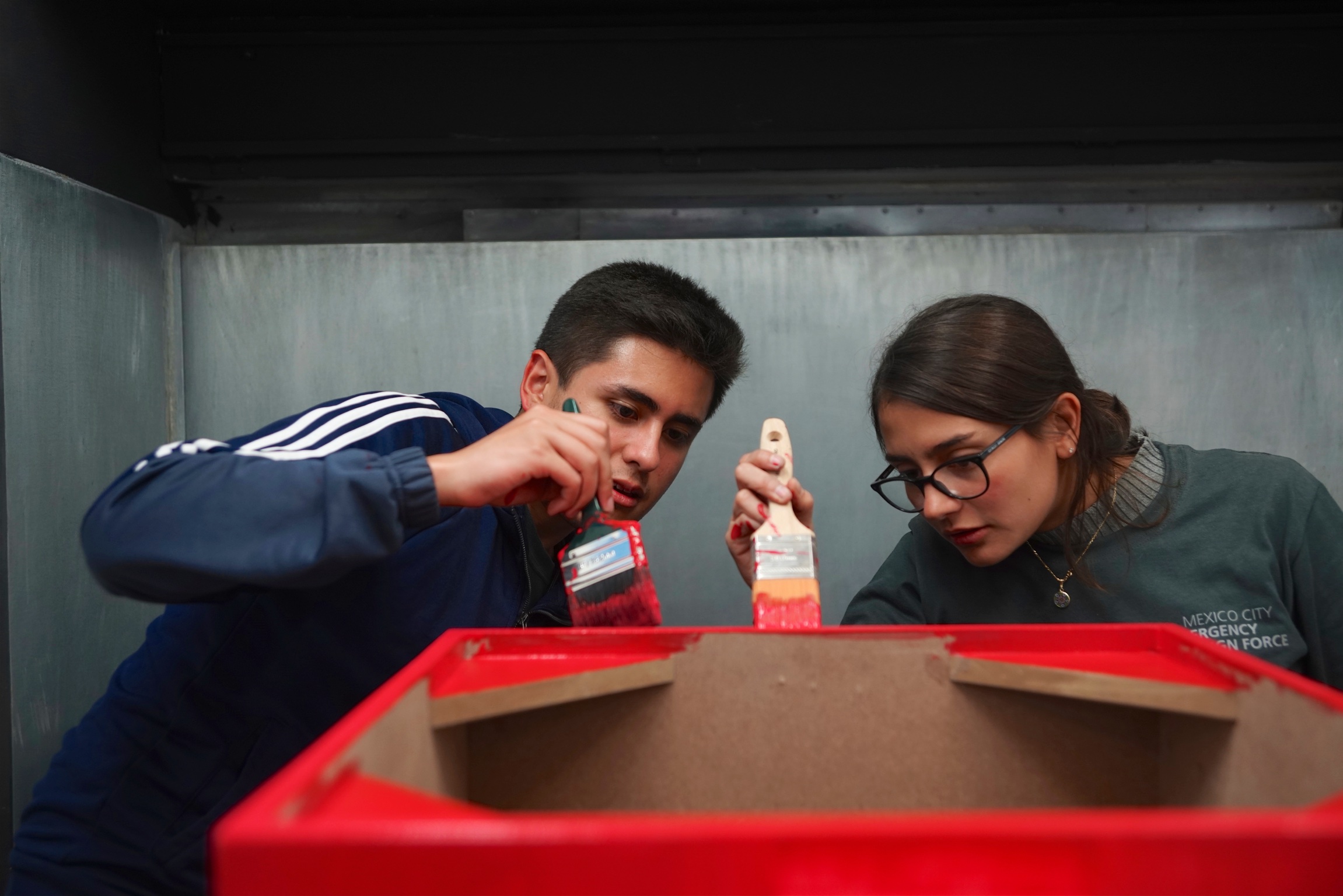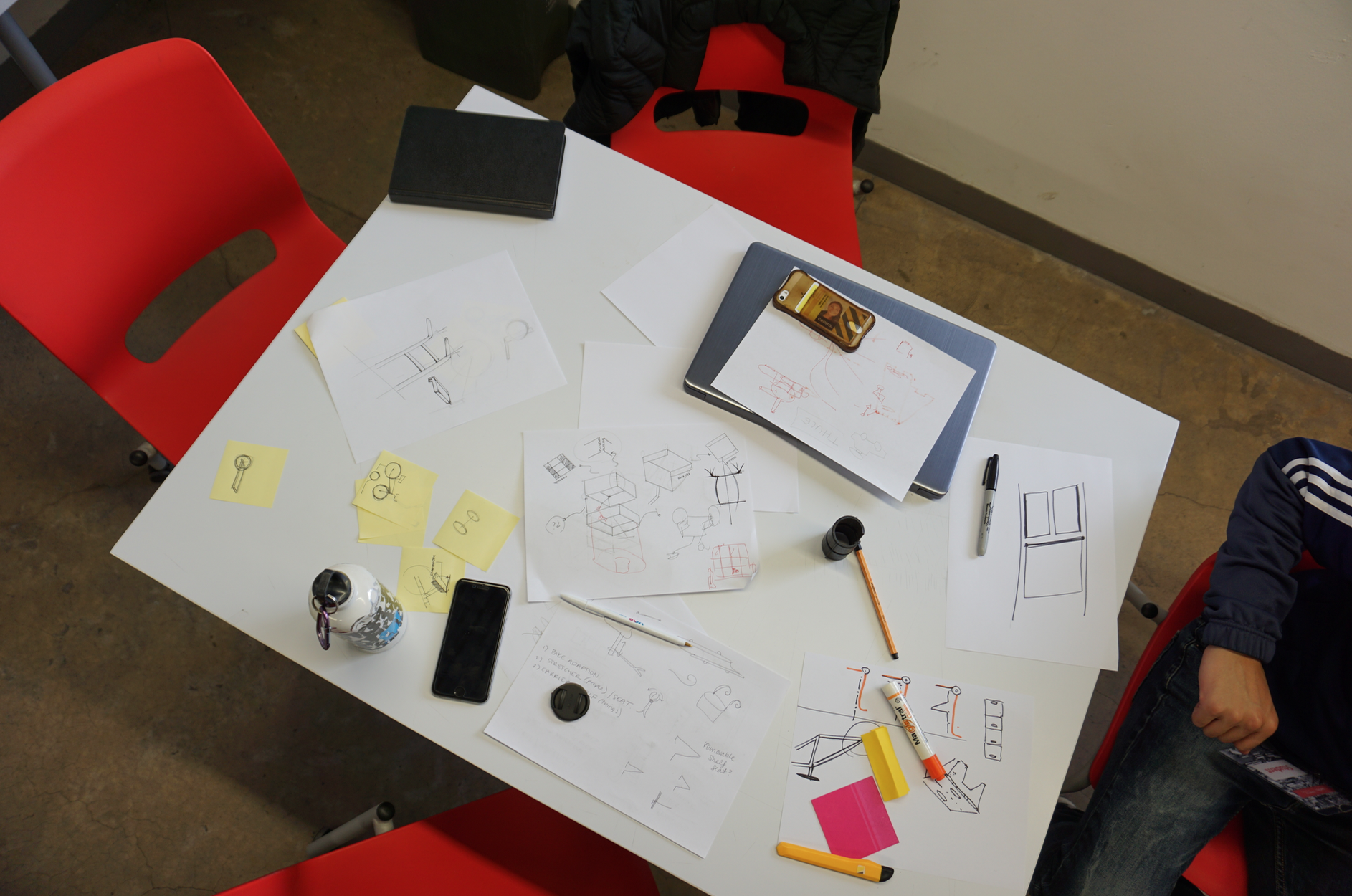Design Under Pressure: Mobility in Extreme Contexts
Team: Andrew Kim, Pablo Badillo, Laura Macarena Esturau
Context: Participant, Design Under Pressure Workshop
Role: Researcher, Strategist
Timeline: Sept 2018
Focus: User Research, Prototyping, Service Design
Natural disasters are on the rise due to the increasing impact of climate change. During these events, people and cities are faced with challenges that range from communication to shelter to mobility.
For one week in Mexico City, I and other design practitioners came together to contemplate the use of design in extreme scenarios. Namely, how can a designer help during times of extreme need?
The Challenge
My team and I were given the challenge to explore the space of mobility in times of crisis. Key questions from the brief included: What are the ways of supplying citizens with provisions in case of a breakdown in infrastructure? How should food shortages and failures in distribution be dealt with and solved? What systems can be used to mobilize emergency medical response on a massive scale?
Empathy & User Research
Through talks, interviews, observational ethnography, historical background research, and site visits, we researched into both the context of the America neighborhood in Mexico City, as well as the response from multiple perspectives (government, local, citizen) to natural disasters like the 2017 earthquake.
We also spent a lot of time exploring the neighborhood. Walking the streets, buying paletas from local cart owners, and taking public transit allowed us to begin to understand the context of mobility in the neighborhood.
The Opportunity Space
Through the research, we uncovered that there was limited access to transportation during emergencies, particularly for the impoverished neighborhood of America. As such, many citizens felt either stuck in their area, or that they wanted to stay and help. This led us to a potential point of intervention: access to cheap, reliable transportation options. We asked, how might we create an opportunity for citizens to access transport options during emergencies that is quick, accessible, and safe?
Ideating, Prototypes, and Testing
With this HMW in mind, and after discussing needs and constraints, we began to ideate. Our initial pull was towards adapting citywide bicycles, similar to the Citibike system in NYC, that are available across Mexico City. We discussed and drew out potential plans for this, noting the wide availability of bikes, the process of turning off locks electronically during emergencies, and the costs associated for government entities to execute this. We even began to create mood boards and look at precedents in this space. However, while the team was attached to this idea, I pushed us to double check our approach. We performed a second site visit and observational study of our neighborhood, and realized that no one in the neighborhood used a bike due to the cost and the fact that it was quite hilly. What we found instead was that everyone, from abuelitas to store owners, were using pushcarts.
With this insight, we began to interview those in the neighborhood again. We found that our observation was right: everyone in the town typically had some form of pushcart. This led us to using them as our focus for the design.
Noting the inability for emergency services to get to where they needed to go during disasters, we first designed an adaptive approach for moving people. We tested foldable seats, plastic chair add ons, and other approaches to getting people from one place to another quickly. When none of these tested well, the group focused on moving supplies. This led to an adapted box that held key supplies, like shovels and gloves. Testing this box, we also found that you could carry someone on top of it in the way we had been trying to do before.
Delivered Prototype
A journey map of how the diablito box could be used during an emergency.
Our final prototype was Los Diablitos, an DIY kit and service that put the power of mobility into the hands of the community.
The DIY kit can be created by anyone: churches, community associations, or an individual at home. The guide shows the key items needed, and how to attach and adapt a box for emergencies. It also included key safety messages to ensure the public knew of available resources.
The service was inspired by the community bonds already available in the neighborhood. Like volunteer firemen, the Diablito team would come together and aid the community during emergencies, bringing needed supplies and transporting those who were injured and could be moved. Using their kits, they would be role models and service(wo)men in their community.
Next Steps: Given the quick nature of this workshop, we were unable to prototype multiple times and get continued feedback on our intervention to develop it further. If we were to take this forward, user testing and continued adaptations would be necessary.
Learnings: While this was a quick workshop project, I learned the value in testing your assumptions and going out to do research again after you already have an idea. It also emphasized the importance of knowing what context you are designing in, as it can truly influence what you design.
